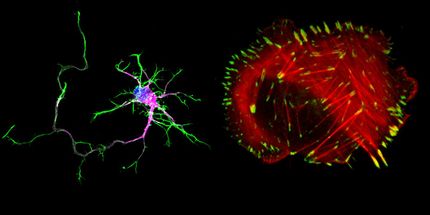Grant to study how cells sense electric fields
Do amoebae dream of electric sheep?
Advertisement
Learning how living cells can detect and respond to electric fields is the aim of a $570,000, three-year grant from the National Science Foundation to Min Zhao, professor of dermatology and ophthalmology at the UC Davis Health System and Center for neuroscience.
Living cells are already known to respond to electric fields, as well as being able to sense light, temperature and chemical signals. Understanding this mechanism would establish a new biological signaling mechanism, with implications for engineering tissues and wound healing as well as in basic science, Zhao said.
Zhao and colleagues will use the grant to generate hundreds of thousands of genetic mutations in the amoeba Dictyostelium discoideum. They will collaborate with Tingrui Pan, professor of biomedical engineering, to develop methods to quickly screen thousands of mutant amoebae for those that do not respond to electric fields. Those defective amoebae will allow the scientists to home in on the genes and molecules responsible.
Dictyostelium was selected for the study because it is the simplest cell to work with that also moves, Zhao said.
In previous work, Zhao and his collaborators found that wounds generate a weak electric field that guides cells moving in to repair the wound.
"The big question is, how do the cells detect the electric field?" Zhao said. He believes that there is a molecule or set of molecules within cells that respond to electric fields.
Most read news
Topics
Organizations
Other news from the department science

Get the life science industry in your inbox
By submitting this form you agree that LUMITOS AG will send you the newsletter(s) selected above by email. Your data will not be passed on to third parties. Your data will be stored and processed in accordance with our data protection regulations. LUMITOS may contact you by email for the purpose of advertising or market and opinion surveys. You can revoke your consent at any time without giving reasons to LUMITOS AG, Ernst-Augustin-Str. 2, 12489 Berlin, Germany or by e-mail at revoke@lumitos.com with effect for the future. In addition, each email contains a link to unsubscribe from the corresponding newsletter.























































